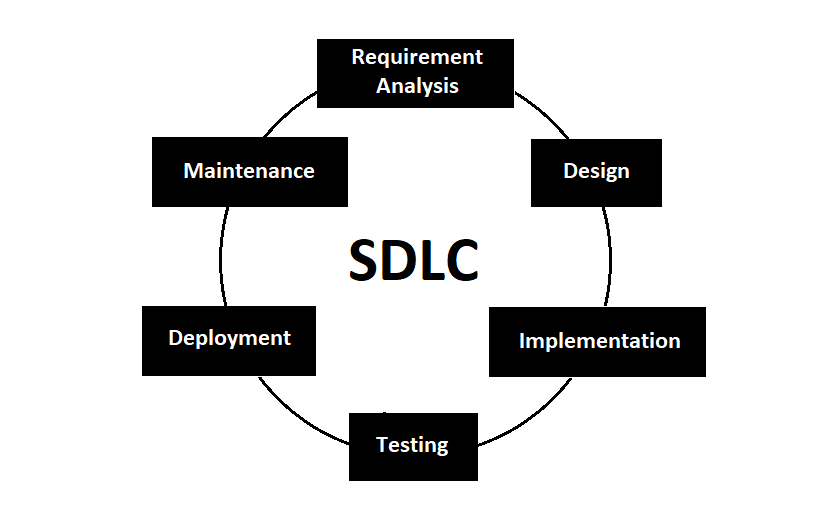What is SDLC (Software Development Life Cycle)
The term SDLC stands for Software Development Cycle. As the name suggests, it’s a process that involves design, development, and testing to ensure delivery of a fully functional product. The SDLC basically defines the entire process involved in the development of a product from planning till deployment.

The steps involved in the Software Development Life Cycle (SDLC) has been explained below:
- Requirement Analysis: The first and the most important phase involved in SDLC that allows the team to gather proper requirements from different sources such as client, sales department, experts, and market trend. The information gathered in this process is then utilized to plan for the envisioned product. And then checked for the feasibility in terms of financial, and technical aspects. Along with the analysis of the requirement, this phase also involves identifying the risks that might be involved in the project. Overall, the strategy is to identify the best approach for the development of the product that meets the business requirement and persists minimum risks.
- Design: This phase helps the team analyze the requirement, and identify the best approach to develop the envisioned product. This leads to the development of a Design Specification Documentation that covers various aspects of the project such as tech stack, development tools, etc. With feedback collected from various stakeholders involved into the project, the design documentation is refined, and shared with the development team to give them an idea about the product to be developed.
- Implementation: This stage involves the development of the envisioned product. The development team needs to ensure that they follow the finalized requirement, and adhere to the best coding style and practices. Defining proper nomenclature for files, variables, etc. ensures that the code is consistent throughout the project, and it can easily be handled by any other team in the future.
- Testing: To ensure the product is fully functional and working without any issues, it is essential to verify that the implemented features are working properly. The integration between different modules should have a smooth syncing. The QA team utilizes manual as well as automation testing to verify the bugs and errors in the developed product. The issues are then shared with the development team to ensure those are fixed. The various testing processes involved in this phase are Unit Testing, Integration Testing, Code Quality Testing, System Testing, Performance Testing, Security Testing, Non-functional Testing, and the most important is User Acceptance Testing (UAT).
- Deployment: The entire development and testing of the product is being handled in different environments such as development, build, testing, staging, etc. Once the development and testing is properly concluded, the code is then migrated or pushed to the final environment which is called the production. This involves copying the latest code and the database to the production environment along with environment configuration, etc.
- Maintenance: Once the code is deployed to the production server, the client may need post-development support for various reasons such as integration of new features, fixing bugs or errors if any. The client may also look out for enhancing performance issues with increasing data, etc. Hence, this phase involves maintaining the deployed product and ensuring it works smoothly and provides users with a great experience.




2 comments